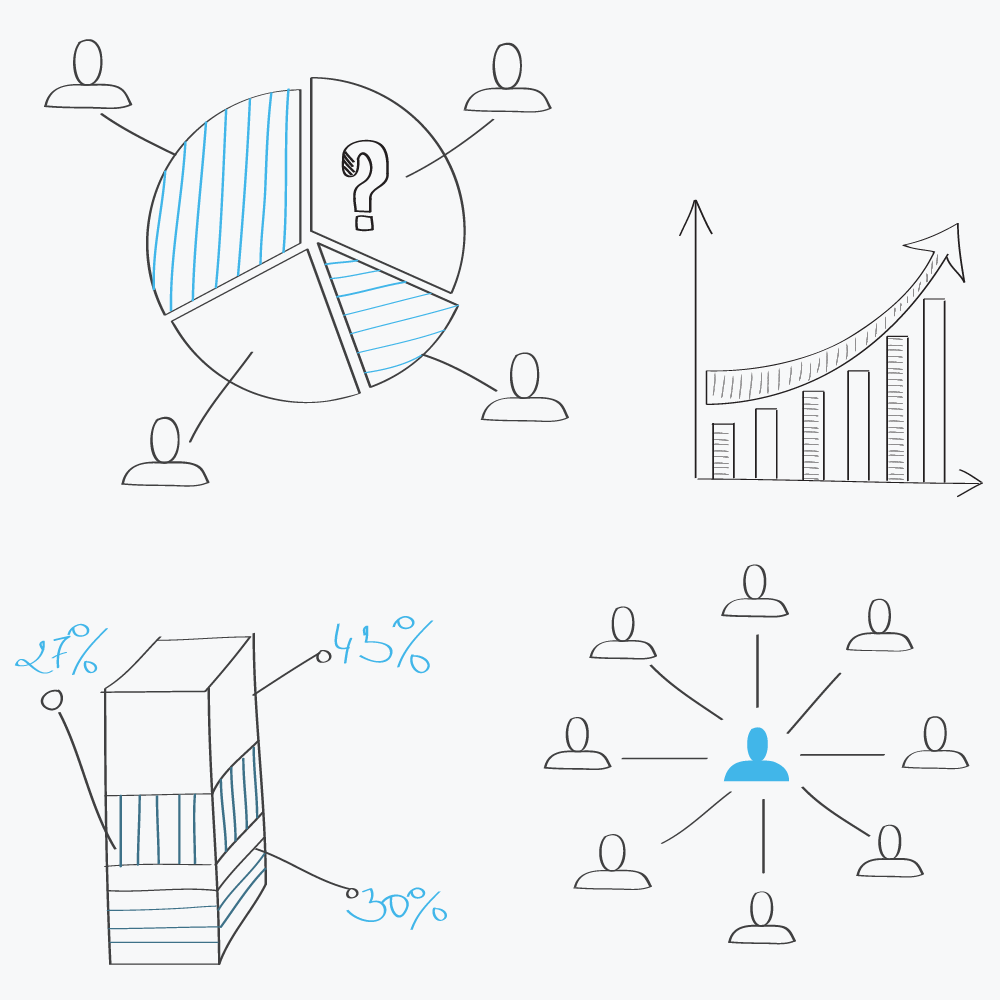Build-up Segmentation
Why?
The diverse needs and wants of users have different implications for the definition of the problem. This method sorts this out by providing the students with an overview and understanding of the different user segments and how they can be reached.
How?
The teacher asks the students to make a description of 10-15 users that are connected to the problem. This description is based on interviews, cultural probes or on other materials that the students gather. The students make an intuitive grouping of the users by writing down each individual user on a post-it and placing them on a collage. Depending on the perceived similarities between the users, they are placed either close together or far from each other. Based on this initial grouping, the teacher asks the students to discuss the variables that differentiate the segments from each other in order to identify and describe each user segment.
Tips
Break down segmentation is another way to identify user segments. Such analysis takes departure in prior determined segmentations variables like demographic-, geographic-, behavioral-, psychological- or psychological parameters that are relevant for the subject. Demographical segmentation parameters could, for example, include: age, gender, income, education, nationality, and occupation etc.
Literature
Freytag, P. V., Møller, M. D., Evers, W., Mortensen, B., & Clarke, A. H. (2014). Fremtidens reklame- og kommunikationsbureau. Syddansk Universitet. Institut for Entreprenørskab og Relationsledelse.
Clarke, A. H. J. (2009). Bridging industrial segmentation theory and practice. Journal of Business-to-Business Marketing, 16(4), 343-373.
Freytag, P. V., & Clarke, A. H. (2001). Business to business market segmentation. Industrial Marketing Management, 30(6), 473-486.

